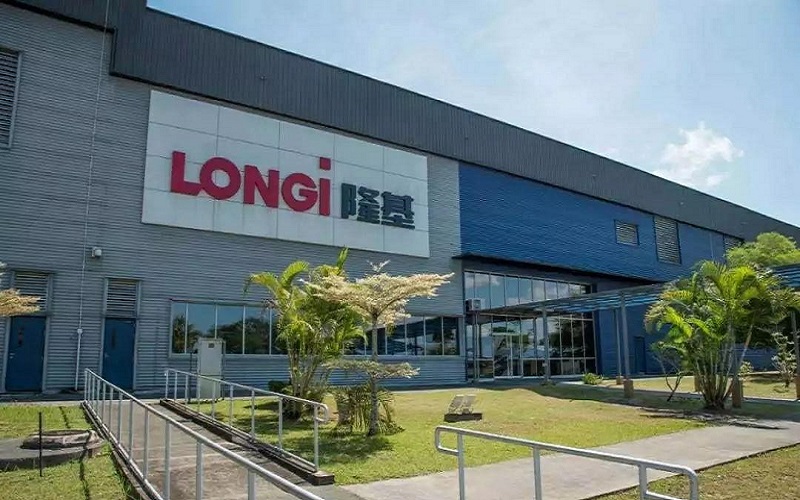
The ten trillion market just around the corner?
Established in 2000, Longi is a company that focuses on monocrystalline silicon technology. With monocrystalline silicon wafers and photovoltaic modules as its main products, it is involved in downstream cell, module, power station construction and operation and maintenance services, and is vertically integrated. Chemical Photovoltaic Industry Company.
Under the stimulus of policies in recent years, the photovoltaic industry has developed extremely rapidly, especially in 2020, the scale of new installed capacity will increase by as much as 60% year-on-year. As an industry leader, Longji shares have also benefited greatly. In the past 12 months, its stock price has increased by 245%, and its peak market value was once close to 490 billion, which can be regarded as the most brilliant target in the capital market.
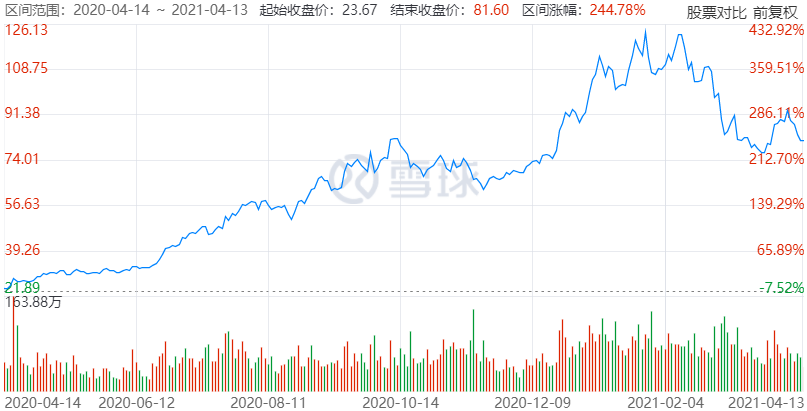
Data source: Snowball
LONGi’s revenue data for 2019 exceeded 30 billion, and the total revenue in the first three quarters of 2020 has exceeded that of the entire year of 2019; in addition, the previous 2020 performance forecast of LONGi has predicted that the net profit attributable to the parent will be 8.2 billion to 86 million. 100 million yuan, an increase of about 60% year-on-year; it is no exaggeration to say that among the photovoltaic companies that have announced their performance, Longi has the best performance in the past year.
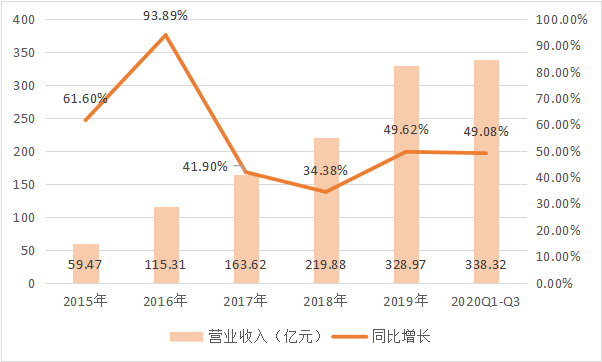
Data Sources: Wind
From the perspective of profitability, LONGi has obvious advantages in the industry: the gross profit margins of the two core businesses, photovoltaic silicon wafers and photovoltaic modules, are significantly higher than the industry average, and the gap with other major competitors is also obvious.
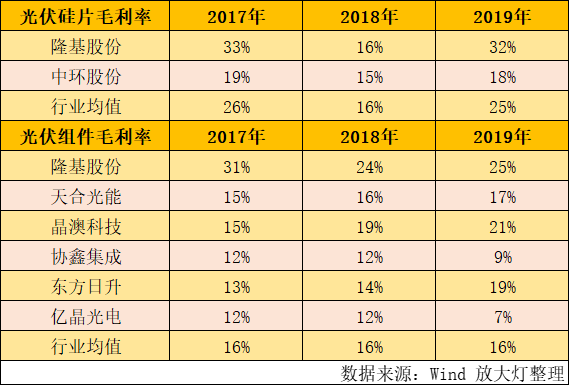
In terms of market position, global silicon wafer production capacity is almost monopolized by domestic companies, and LONGi’s global leadership position is solid: the company’s silicon wafer production capacity accounts for 37% of the industry as a whole, ranking first in the industry and leading the second Zhonghuan by ten percentage points.
In the component market, from the perspective of shipment ranking, Longi’s global shipment ranking from 2017 to 2019 is the world’s fourth, and its production capacity and market share have increased rapidly, and it is expected to enter the top two in 2020.
Why does such a photovoltaic leader with high market value, large scale, strong profitability and high market position suddenly want to cross-industry hydrogen production?
First of all, hydrogen production is one of the current clear policy-based industries: in 2019, hydrogen energy was included in the “Government Work Report” for the first time, clearly proposing to promote the construction of hydrogen refueling and other facilities. In the two sessions in 2021, “carbon neutrality” and “carbon peaking” were included in the government work report for the first time, becoming national strategic goals to be achieved by 2060.
Secondly, as the cleanest secondary energy source at present, the by-product of hydrogen is water, which plays a key role in achieving zero carbon emissions in the future. The growth of the industry is guaranteed and the prospects are promising: According to the data of China Hydrogen Energy Alliance, China’s hydrogen production in 2018 is about 21 million tons, with a market share of approximately 2.7% of the total terminal energy; it is estimated that by 2050, hydrogen energy will account for more than 10% of China’s terminal energy system, and the demand will be close to 6,000 tons, which can reduce 700 million tons of carbon dioxide. The annual output value of the industrial chain is expected to reach 12 trillion.
Although 2050 is still far away, there must be opportunities in the industries that are most favored by the country’s major policies. It is a reasonable choice for Longi to enter it and seek development.
What’s more, photovoltaics and hydrogen production are a good match.
What are the benefits of photovoltaic hydrogen production?
According to the source of production, hydrogen can be divided into three categories: “gray hydrogen” (hydrogen production from fossil fuels), “blue hydrogen” (industrial by-product hydrogen), and “green hydrogen” (hydrogen production from renewable energy by electrolysis).
The photovoltaic hydrogen production that Longi has entered this time is to use electricity produced by photovoltaic power stations on the spot in areas rich in light resources, electrolyze water to produce hydrogen, and then transport it to the destination through pipelines or other means of transportation. Photovoltaic hydrogen production is a more typical green hydrogen. Compared with the larger amount of “gray hydrogen” currently used, it has almost no carbon emissions during the production process, which is a more environmentally friendly technical route.
At the same time, hydrogen production is also a supplement to photovoltaic power generation technology, which can to a certain extent solve the long-standing problems of high photovoltaic power generation waste rate and large fluctuations in power generation.
Photovoltaic power generation waste rate: The percentage of power generation that is completely wasted without entering the power grid, without any effective use.
As a new energy source, the tidal nature of photovoltaics is very obvious, and under normal circumstances, my country’s light-enriched area is far from the power load area, and mismatches of supply and demand often occur, which is not conducive to the safety and stability of the power grid, and there are certain difficulties in grid connection. At the same time, fluctuations in power generation will cause electricity consumption problems. Although the curtailment rate of domestic photovoltaic power generation is not large in recent years, the national average curtailment rate in 2020 is about 2%, but the curtailment rate is still in the northwest region where electricity consumption is difficult. Around 4.8%.
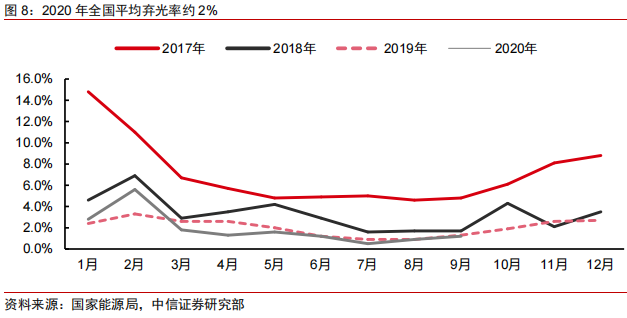
In response to the photovoltaic power generation waste rate, the State Grid currently encourages the addition of supporting energy storage facilities in photovoltaic concentrated areas, or on-site digestion. Hydrogen energy is an ideal energy interconnection medium-by using the energy produced by photovoltaic generator sets to electrolyze water to produce hydrogen on site, energy storage and peak shaving can be realized at the same time, reducing the waste caused by mismatch of supply and demand. , Improve the flexibility of the photovoltaic system, and then solve the two major problems of storage and grid connection.
At the same time, the synergy between hydrogen production and photovoltaics is also conducive to direct access to cheap electricity by hydrogen production plants. This is also an ideal win-win model for the hydrogen production industry where electricity costs are the core cost.
In terms of industrial applications, industrial use and transportation are the two clearest application scenarios for hydrogen energy. For the current two high-energy-consuming industries, hydrogen energy is expected to replace traditional energy sources, assist in the transformation of high-emission production capacity, and reduce carbon emission pressure.
According to data from the China Hydrogen Energy Alliance, in 2050, hydrogen consumption in the transportation sector is expected to reach 24.58 million tons, accounting for about 19% of the total energy consumption, which is equivalent to reducing crude oil consumption by 83.57 million tons; hydrogen consumption in the industrial sector is expected to reach 33.7 million tons, equivalent to In order to reduce the consumption of 170 million tons of standard coal-both sets of data are of great significance to the realization of terminal zero emissions.



 2021-04-21
2021-04-21



















